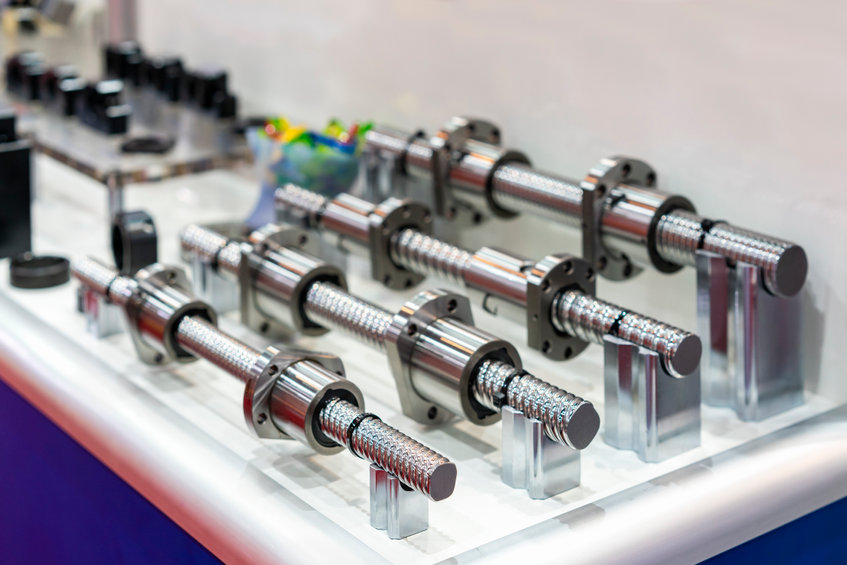Actuators: The Muscle Behind Industrial Motion
Similar to the way in which muscles in the human body enable motion of the arms, legs and other body parts, actuators facilitate mechanical movement. As a matter of fact, nearly every piece of industrial equipment relies on actuators to generate the motion needed to properly operate; however, the actuator used differs from application to application and is chosen based on the required type of movement and preferred or available power source. This blog will outline the many types of actuators and their attributes.

What is an Actuator?
Simply put, an actuator is a device that allows controlled, mechanical motion or positioning, so they are an essential component in industrial equipment. Actuators get things moving by converting an energy input – most often electric, pneumatic or hydraulic – and a control signal – usually manual, electronic or software-induced – into mechanical force and motion, which is either linear or rotatory, depending on the needs of the application.
Because they come in all shapes and sizes, actuators can be found everywhere in industrial environments from the automatic doors in the lobby to the robots and automated machinery on the factory floor to the cell phones in employees’ pockets. Each application is likely to have a different type of actuator, which are classified by the type of motion and then by the energy input, which we’ll explore below.
Types of Motion
Actuators can create two main types of motion: linear and rotary.
Rotary actuators convert energy into rotary or circular motion through a shaft to control the speed, position and rotation of machinery. Because they move in a circular motion, rotary actuators are ideal components in machines that have rotating parts and need to turn on a circular plane. They can rotate continuously in one direction or go back and forth on the circular plane. Known for high torque, the ability to achieve any degree of rotation, zero backlash, low maintenance and the ability to function in harsh environments, rotary actuators are widely used on valves that must go from open to closed, in medical equipment, robotics, heavy-duty equipment, such as cranes and bulldozers, and equipment for heavy process industries such as oil and gas
Linear actuators may use a belt and pully, rack and pinion, ball screw, or a piston to convert energy into linear motion. A linear actuator can create push and pull or forward and backward movement on a set linear plane. They are known for high repeatability, accuracy, low maintenance and ruggedness. Linear actuators are often used for lifting, dropping, sliding or tilting of machines, objects or materials. Because they provide precise and efficient linear movement, they are essential in many automation, robotics, material handling and motion control applications in a variety of industries.
Actuator Types
Both linear and rotary actuators are further classified based on the source of energy they use. Each has its strengths, so the type of actuator selected depends on the requirements of the specific application, including the specified speed, force and durability. The most commonly used actuators in industry include:
- Pneumatic actuators: These use compressed air to generate motion and can be found in a variety of applications, such as controlling valve positions, moving material handling equipment or machine parts, as well as in sensors, pumps and air-operated tools. Pneumatic actuators are ideal for applications that require high force, high precision and quick response, as well as those where risk of fire or explosion exists because they are air operated and do not use electricity.
- Hydraulic actuators: Hydraulic actuators feature a hydraulic motor or a cylinder, piston and pressurized hydraulic fluid to create motion. They offer high levels of force and are useful in rugged applications where moving heavy loads and mechanical stiffness are requirements, making them especially suitable for heavy-duty use, such as vehicle, marine and aerospace applications.
- Electric actuators: Electric actuators rely on electrical energy to generate motion. Driven by AC or DC motors, they offer very precise control, low noise and low maintenance. They can be found in automation systems, lab equipment, medical devices and other applications that require very high levels of precision, repeatability and accuracy.
- Mechanical actuators: In mechanical actuators, an external force, such as a crank, activates an internal force, such as levers, gears or cams, to generate motion. Mechanical actuators are found in applications where simple operation, low cost and ruggedness are top priorities, such as manual valve systems and hand-crank machines.
- Magnetic actuators: Though less commonly used than the above actuator types, magnetic actuators may be used to shut off or mix fluids and steam in HVAC systems or other applications. As the name implies, magnetic actuators rely on magnets to generate a mechanical force, linear or rotary motion and either continuous or limited motion.
- Thermal actuators: These actuators generate motion in response to temperature changes using a piston and a thermally sensitive material. Though not widely used, they are a good choice in safety devices, such as valves used to shut down processes when temperatures get too high.
Selecting the Right Actuator
Actuators are available in many types and should be chosen based upon the preferred power source, whether linear or rotary motion is needed and the level of precision, speed and force required for the specific application. Selection of the actuator that will be most suitable for an application often requires a balancing act between cost, available power source, operating environment and the specifications of the application.
Because actuators are an integral component in industrial applications where avoiding failure is essential to uptime, it is recommended that high-quality, reliable actuators are selected from reputable manufacturers, such as Bimba, Bimba Mead, Emerson ASCO, Emerson Aventics, IAI and others. Contact JHFOSTER to learn more about what type of actuator is best for your application.
